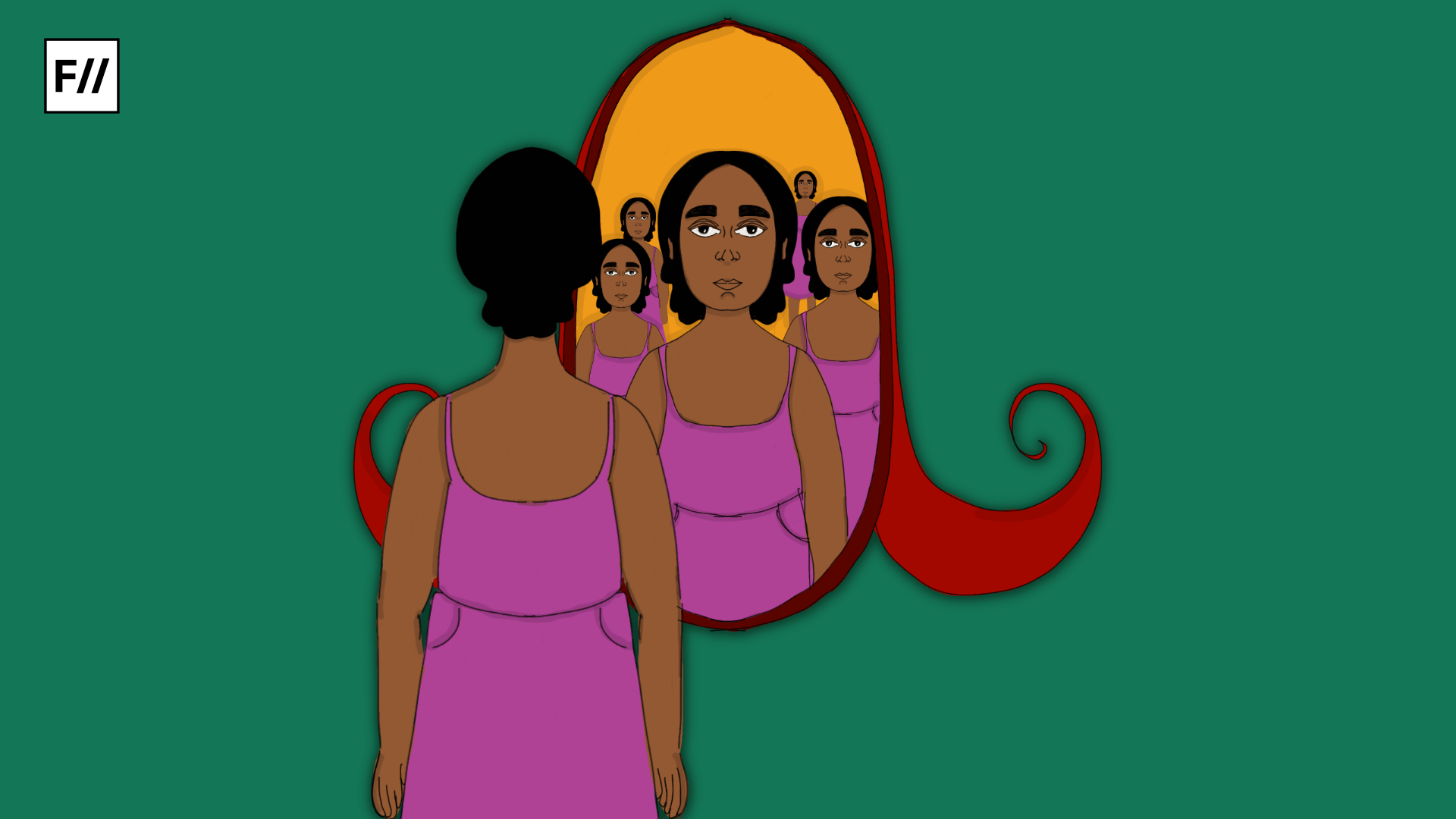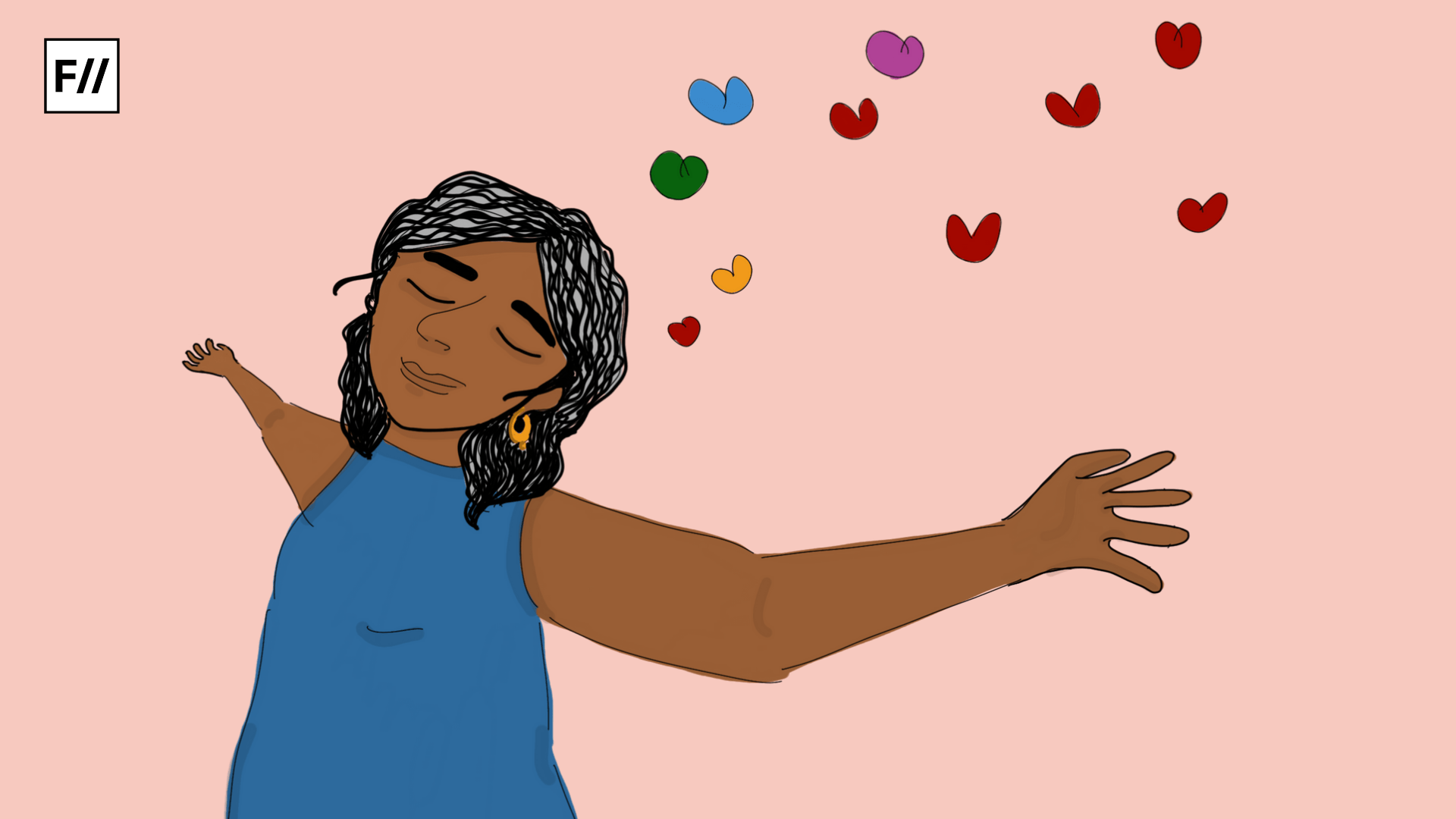Ambiguity lies in conjunction with fashion. Sociological understanding of fashion has traversed from macro-based, class structural explanations to styles and personal appearance, stemming from increasing individual participation in the creation of appearance. The inherent state of advanced capitalism represents heterogeneity in “fashionable” looks, its playfulness or manipulation with surface and aesthetics, sharpening or blurring of binary, and intensified uncertainty on issues of social appropriateness.
Brands, designers and consumers alike trade on and reinforce exclusivity to such an extent that the available range of choice in the marketplace contributes to a state of confusion bordering on chaos.
Brands, designers and consumers alike trade on and reinforce exclusivity to such an extent that the available range of choice in the marketplace contributes to a state of confusion bordering on chaos. We all must have come across the viral scene of the television series Pose (2018) where one of its protagonist Elektra Wintour, a trans woman and her companions get obstructed and barred from a bridal shop, they are abruptly reminded of the reality of trans lives when the owner denies them service on the account of them not being “real women.”
Exclusion from commercial fashion
Pushing the boundaries of clothing often remained in the purview of artistic brilliance or luxury fashion brands and is rarely questioned in everyday lives. Thus, an interplay between masculinity and femininity stands at the juncture of being “othered” by gender conforming individuals. The “otherness” of alternative and gothic fashion that was once considered deviant, can also be witnessed in the realm of gender bending fashion, frowned upon for breaking the binary.

As much as queer individuals would benefit from genderless or gender neutral fashion, it repeatedly comes at a cost of erasure of fashion for masculine women, and is typically understood by a greater visibility for skirts and dresses alike, alluding to the femboy subculture. Jaden Smith and Harry Styles have been the talk of the town for wearing skirts and appearing on the cover of the GQ magazine, incorporating their hybrid masculinity.
A commercial clothing brand such as Pantaloons, greet their customers with opposing displays of clothing, depicting the hegemonic gender binary that enforces itself upon clothes, essentially pieces of fabric stitched together, with a label. This participates in the exclusion of gender non-conforming individuals, or those who do not adhere to the binary. Since clothing is a marker of gender expression for some, discourse regarding binary clothing is eminent.
Corroborating this research with theorisations of ‘multiple masculinities that comprise configuration that are both fluid and conflicted‘, a young queer adult, Deepro, 22, remarked the non-essentiality of the erasure of the binary but was wishful of a separate section for non-binary individuals. On the other hand, Ritama, a masculine queer AFAB individual, despises the binary that prevents them from exploring masculine clothing, for their parents do not approve of their choices. They wish for an elimination of the binary divisions so that their queer self is not made visible in an extremely binary society.
They wish for an elimination of the binary divisions so that their queer self is not made visible in an extremely binary society.
A separate section would further obstruct liberation in fashion for it would classify non-conforming individuals to a space visible to the public eye, and hence, more policed. Moreover, it would prevent closeted individuals from an access to such space. As much as gender transgressions in clothing affirm one’s identity, it increases the possibility of violence over individuals. Thus, it is a constant struggle to mark and unmark non-conforming bodies, in order to protect, the gender privilege. This gender privilege extends to men solely, for women’s bodies are policed to greater extent, either way. The removal of binary shall not only usher in inclusivity but also sensitise the public about transgressions in clothing.
The dominant Indian cultural ethos, normatively drapes a woman in a saree, and the man in a dhoti or punjabi. Variations of the above have emerged but have rarely welcomed the male and the female bodies in opposed clothing. While sarees are generally unavailable at commercial clothing stores such as Max, Reliance Trends, Zudio, etc., Kurtis for women and punjabis for men are widely available.

Ritama, usually opts for kurtas, that traditionally have been worn by both men and women, with spatial variations. They steer clear from the feminised kurtas or shorter kurtis that come with flowery motifs and designs, available at every storefront. It is Deepro who believes that traditional clothing should be adorned and adhered to, as per the cultural norm. This normative adherence has put Ritama under mental distress when a wedding necessitated them to comply with their assigned gender at birth, that made them shy away from any record or photographs of them donning such. Colonisation has seen a desecration of gender-neutral clothing such as angrakhas, and its imposition of a bipartite identity, replaced the fluidity.
The precarity of the double-barrelled distinction hints at Diti’s situation where she is unable to find a shirt that fits, from the men’s section. The average male figure in India in taller than the average female body, and tends to actively exclude women from purchasing from their opposing section. The length of clothing is clearly an obstacle. Moreover, searching for t-shirts on ecommerce website such as Myntra would result in the understanding of size differences between the binaries. The t-shirts designated for men mostly, begin at a chest size of 38 inches, while women’s t-shirt generally carry 34 inches as the bust size, when labelled as Small. Few brands that are inclusive, do not speak for all, or they do not have an inclusive inventory.
Most social spaces are symbolically gendered, similarly, clothing stores have become symbolic of a space that is gendered, which hides a masculinist underpinning. Diti exclaims how she was turned away from men’s trial room despite carrying clothes from the men’s section, substantiates an active exclusion from a space, where male activity predominates.
The lack of women helpers in the men’s section deters Ritama from shopping there, despite her wishes.
The lack of women helpers in the men’s section deters Ritama from shopping there, despite her wishes. Gender conformity becomes institutionalised when puberty is reached; hence, we accept tomboys at their pre-pubescent stage, because female masculinity is generally received by hetero and homonormative cultures as a ‘pathological sign of misidentification and maladjustment, as a longing to be and to have a power that is always just out of reach‘.
Performing the fashion statement
Gender is not necessarily correlated with sex. Because gender has cultural genesis, it is in some sense a role and thus intricately connected to performance. ‘My environment in general is intolerant and closeted, when I am around my family, I always have to find gaps and fit myself in the junctures of not being outrightly queer but also not a hundred percent straight.’ Diti shares her everyday negotiations with outfits, intolerance and exclusion. Her closet has become a space of her efforts to eliminate binary, incorporating masculinity entangled with femininity.

In this sense, it can be said that fashion refers to the way that identity, particularly gay identity, is concealed and dis-closed because gay identity is not quite hidden when it comes to outfits and fashion, but not quite displayed either. Rather, it is represented through coded or manipulated gestures that sustain the appearance of ambiguity.
‘It is like I am wearing masculine clothes but I am clearly showing off my curves, a style I often like to wear.’ Diti embraces her clothing as a performative challenge to heteronormativity. The complexities related to clothing are manifested through performative aspects of identity, together with attitudes of bodies and sexual practices. Gender non-conforming bodies hence, indulge and explore the reconstruction of the hierarchical, heteronormative clothing structures.
‘My butt is out there but I am dressed like Salman Khan from Tere Naam, all blacks.‘ Diti’s narratives about her attires and what she wants to display through her attire seam the binary into one or fragment the binary into many. With the incorporation of more fluid styles, Diti grapples with manoeuvring or shifting with the queer signifiers embodied through fashion. Fashion is something one ‘does’, in everyday life. Eventually, we engage in a process which becomes a political and aesthetic act of visually negotiating with the diverse identity, the identity of being a gender nonconforming individual and challenging the traditional assumptions of fashion, within the context that establishes binaried clothing as an ‘an image, a system, or a popular narrative.’
Ritama recalls how wearing a lehenga to a wedding had taken an immense mental toil on them, them homophobic domestic space and heteropatriarchal parental attitudes, have alienated them from their identity.
Ritama recalls how wearing a lehenga to a wedding had taken an immense mental toil on them, them homophobic domestic space and heteropatriarchal parental attitudes, have alienated them from their identity. ‘I have neither been able to buy the clothes I want to, nor cut my hair in a style I prefer, I have to think about the repercussions I might face back at home if I deviate.‘ The body is the site where identity constructions are articulated, understood and transgressed. Ritama, due to their obstructions, employs concealment, covert expression of desire and suppression, compromising on their self-expression.
(Re)defining identities
The fashioned body is a particularly positioned place through which the construction of the self can be understood. The act of getting dressed is itself a way of making an archive of self or identity, as, each time you dress yourself, it is an act of invention that is inherently tied to conceptions of self and to desire for specific reception from a public.

Fashion scholars have asserted that fashion is identity construction written large on the body. In this way, fashion might be understood as the archive that speaks for us. This fashion archive is a personal construction consisting also of public memory, which imprints itself on the next generation with the invisible present.
Relevant Sources:
https://bbc.com/culture/article/20210308-the-empowering-androgynous-look-that-pop-fans-love
Defining Androgyny and Elimination of Gender Codes in Fashion
How Gender Nonconforming People Approach Fashion





